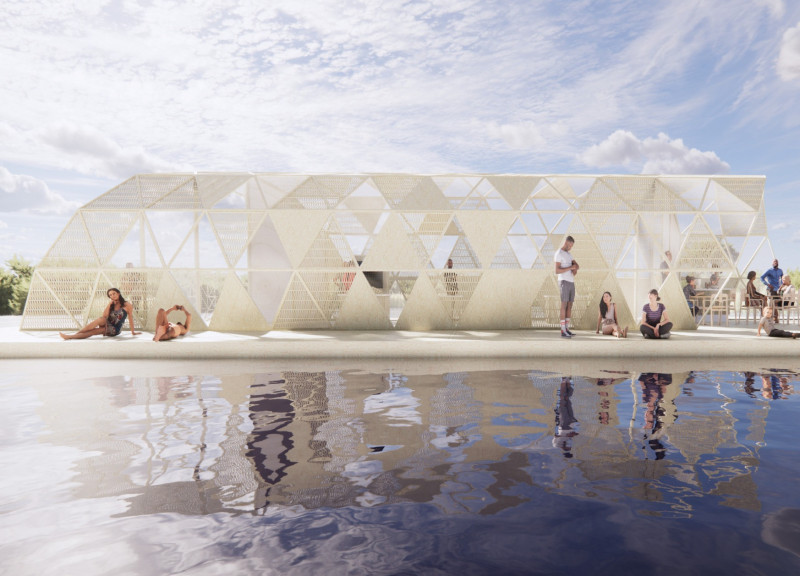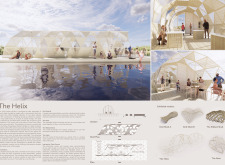5 key facts about this project
The Helix timber pavilion is a well-thought-out structure that responds to the pressing challenges of climate change, especially rising water levels. Located by an urban lake, it functions as an exhibition space, encouraging interaction and exploration through its unique design. The concept is inspired by the helix shape, which symbolizes DNA, combining practicality and visual appeal while connecting to the surrounding natural setting.
Materials and Structure
The design emphasizes wood's important quality of having a high strength-to-weight ratio, making it suitable for floating structures. The pavilion consists of equilateral timber triangles arranged in a helix formation. This setup allows for both modularity and versatility in its form and function. A notable feature is the buoyant deck, which relies on air-filled tanks positioned beneath the structure. This not only improves stability but also offers a practical solution to the issue of changing water levels.
Interactive Exhibition Space
Covering about 50 square meters, the exhibition area includes several scale models that illustrate how wood can be used in construction. Models such as Grid Shell A and Grid Shell B show the adaptability of timber through the use of layered laths connected with cylindrical joints. This design encourages visitors to engage with the material properties and the possibilities of wood in building.
Innovative Infill Panels
The pavilion showcases infill panels that demonstrate various applications of wood. Some of these panels are made with wood shingles, showcasing traditional craftsmanship. Others use woven bamboo set in resin, which creates a watertight seal. The addition of flat translucent polycarbonate sheeting allows natural light to enter, creating a brighter and more inviting interior space.
Interactive Learning
To enhance visitor engagement, the pavilion includes an interactive video screen that shows the construction process of the models on display. This feature provides insights into the advantages of using wood as a building material. It promotes understanding of sustainable design practices and invites active participation in the exhibition.
The design skillfully combines form and functionality, featuring intricate wooden joints and well-finished surfaces that create a tactile experience. Every detail invites visitors to explore and connect with the principles of sustainable construction.



















































